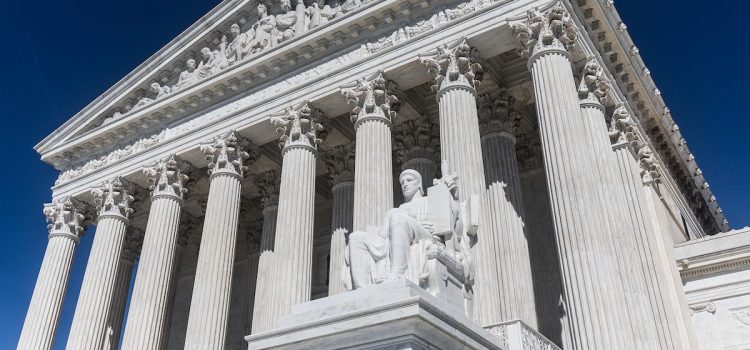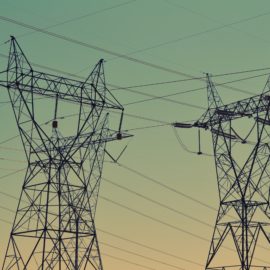

This article is an excerpt from the Shortform book guide to "Just Mercy" by Bryan Stevenson. Shortform has the world's best summaries and analyses of books you should be reading.
Like this article? Sign up for a free trial here.
What are the main problems with the criminal justice system? How can we fix our understanding of justice?
The criminal justice system is far from perfect, but we can help get it there. Bryan Stevenson’s book Just Mercy highlights the institutions that have corrupted how we view justice and offers solutions to guide us in the right direction.
Continue reading to learn more about these problems and how we can fix them.
Correcting Our Understanding of Justice
According to Stevenson, four institutions have affected our view of justice, especially in relation to race: slavery, convict leasing, the Jim Crow era, and mass incarceration. He argues that these institutions have corrupted our understanding of justice, explaining the problems with criminal justice system’s complacency with unjust punishments.
(Shortform note: It bears mentioning that, throughout Just Mercy, Stevenson implicitly likens the plight of enslaved Black people to that of imprisoned Black people today. Though he doesn’t go as far as other experts, who argue that mass incarceration amounts to modern-day slavery, he remains aware of the parallels between the subjugation of Black people via slavery and their disproportionate subjugation via mass incarceration today.)
Institution #1: Slavery
First, Stevenson claims that slavery—and its legacy of racial terror, in which Black men were publicly lynched throughout the South—has influenced our conception of justice. In particular, he argues that frequent lynchings of Black men led to the modern death penalty, as it redirected the ire of white southerners that previously culminated in lynchings. By recognizing this connection, Stevenson implies that we can help undermine the broad public support for capital punishment.
(Shortform note: The term “lynching” has long eluded straightforward definition, as activists struggled to settle on a single definition. However, in 1940, the National Association for the Advancement of Colored People (NAACP) and other activist groups agreed that lynching was an extrajudicial killing done “under the pretext of service to justice, race, or tradition.” On this definition, some contemporary murders of Black men—such as Ahmaud Arbery, who was chased down and murdered under the false pretense that he was a burglar—qualify as lynchings.)
Institution #2: Convict Leasing
Next, Stevenson discusses convict leasing—the practice of convicting former slaves of frivolous crimes to lease them to private businesses while incarcerated. Convict leasing, Stevenson argues, has effectively led to the re-enslavement of former slaves. Consequently, he implies that it’s responsible for our complacency with the modern prison labor system, in which prisoners work for little to no wages.
(Shortform note: States can compel prisoners to work for free because of a so-called “slavery loophole” in the Thirteenth Amendment, which prohibits slavery and involuntary solitude except as a punishment for a convicted crime. In November of 2022, however, four states—Alabama, Oregon, Tennessee, and Vermont—voted to remove this loophole from their respective state constitutions, signaling support for a movement to change the Thirteenth Amendment itself.)
Institution #3: The Jim Crow Era
Additionally, Stevenson argues that we fail to recognize the legacy of the Jim Crow Era, in which state laws legalized racial segregation. In particular, he observes that while we readily acknowledge the achievements of the civil rights movement, we don’t acknowledge the lasting harm that segregation causes by inflicting daily insults and humiliation on Black people. In turn, he suggests that to understand the discrimination that currently underlies the justice system, we must understand these lasting harms.
(Shortform note: In The New Jim Crow, Michelle Alexander argues that the War on Drugs—a government initiative beginning in the 1970s that purported to stop the use and distribution of illegal drugs—furthers the segregation of the Jim Crow Era under the guise of punishing criminals. Specifically, she argues that despite equal levels of drug use in Black and white communities, Black people are arrested disproportionately for drug crimes. Consequently, she claims that the War on Drugs sequesters Black people in prisons, turning them into second-class citizens just like in the original Jim Crow Era.)
Institution #4: Mass Incarceration
Lastly, Stevenson argues that mass incarceration has made us complacent with the disproportionate imprisonment of people of color, as well as unjust practices like the targeting of impoverished communities for drug crimes. To fully grasp the shortcomings of our justice system, he implies we must reckon with the reality of mass incarceration.
More Concrete Steps to Improve the US Justice System
Many of Stevenson’s suggestions for creating a just society are abstract, focusing on how we can better understand the underpinnings of our current justice system. But other authors, such as Ibram X. Kendi and Michelle Alexander, provide more actionable advice to supplement Stevenson’s ideas.
In How to Be an Antiracist, for instance, Kendi offers various strategies to combat racial inequality at the individual level. These strategies include:
- Participate in protests against unjust policies, or demonstrations to raise awareness about such policies.
- Vote against policymakers that support unjust policies, and instead support politicians committed to overthrowing unjust systems.
- Commit to educating the public about the racial inequality that underlies many unjust systems.
In The New Jim Crow, on the other hand, Alexander endorses broader policy changes to fight the structural inequalities in the justice system. Her recommendations include:
- Fund public defenders to the same extent as prosecutors to prevent incompetent representation.
- Establish better drug treatment programs for addicts and better re-entry programs for the formerly incarcerated.
- Remove the financial incentives that perpetuate the current system, such as employers’ reliance on convict labor.

———End of Preview———
Like what you just read? Read the rest of the world's best book summary and analysis of Bryan Stevenson's "Just Mercy" at Shortform.
Here's what you'll find in our full Just Mercy summary:
- An examination of the justice system's failures toward marginalized populations
- Examples of criminal cases from history that illistrate the failures
- Possible solutions for repairing the justice system in America






